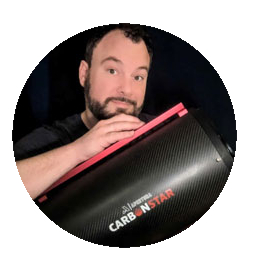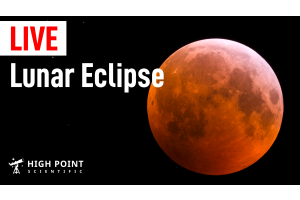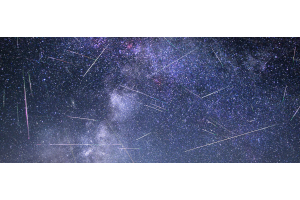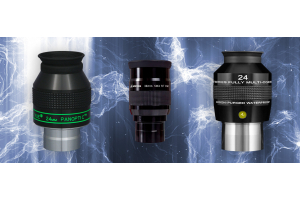
With 2024 coming to a close, we’ve rounded up some of the best visual, smart, and astrophotography telescopes on the market this year! If you’re looking for immersive views into the night sky, automated imaging excellence, or the best optics for your dedicated astrophotography system, then check out the stellar telescopes below!
Visual Telescopes
There’s nothing quite like visual observing. When you look through an eyepiece, you’re looking at light that has traveled anywhere from a few minutes to thousands of years to reach you. While visual observing isn’t as “picturesque” as an astrophoto, it does offer a level of unique “connection” that exceeds what any image can give you - as anyone who has seen the rings of Saturn through a telescope can likely attest to. That’s why we, and hundreds of other beginner and professional astronomers alike, still love visual astronomy in 2024!
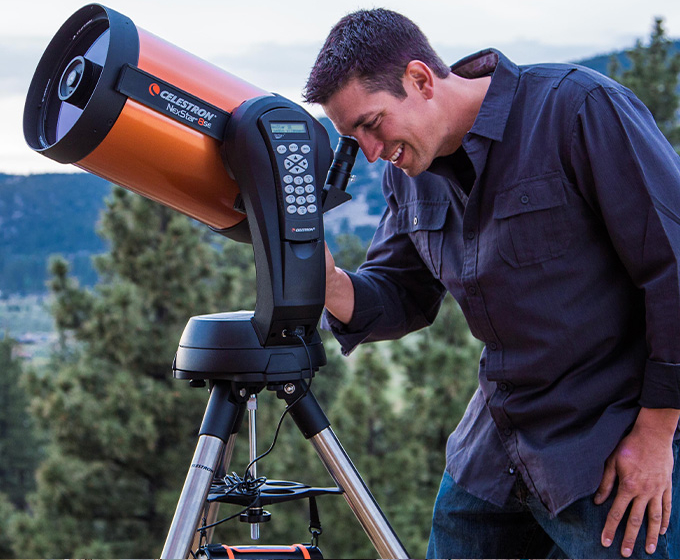
The Best Computerized Telescope of 2024
Celestron NexStar 8SE Telescope Bundle —
Want something that can show you the way? Looking for quality visual optics? Don’t want to sort through hundreds of products to build a powerful kit? Then this is for you!
This Celestron telescope will provide you with excellent views of planets, the Moon, and deep sky objects with 8” of light-gathering power and plenty of magnification right at your fingertips! As a fully GoTo system, once set up, you simply pick an object from the massive database built into the included NexStar+ hand controller and you’ll be transported there in a matter of moments. This telescope will provide you with excellent views of planets, the Moon, and deep sky objects. While the normally included accessories give you a good start, this bundle is a big step forward for a great value. This telescope comes with the following: the Portable Power Supply that has you covered out and about, the Plossl Eyepiece Kit with five eyepieces, a 2x Barlow, and six filters in a foam-padded hard case, and the Apertura Universal 2A AC Adapter for stable, consistent voltage to your SCT.
As one of the most popular scopes on the market today and for many years prior, you’ve got tons of options when it comes to first-party and aftermarket accessories and upgrades. Some of our favorites include:
If You Liked This, Here’s Another Option: Celestron NexStar Evolution 9.25" Computerized Telescope Bundle
This package takes everything the NexStar 8SE does and elevates it: more aperture, more magnification, more powerful mount with more features, and… more expensive. For those shopping for a visual telescope in this price range, however, this is a hard package to beat. With 1.3x more light-gathering ability than the 8SE, a robust tripod, the same great eyepiece set included with our favorite 8SE bundle along with one of our other favorite extras, a dew shield, this is certainly a power premium pick!
The Best Telescope of 2024
Apertura AD8 Dobsonian 8" Telescope with Accessories —
The Performance: Value Visual Champion. If you’re looking for the most telescope you can get for your money, this is it.
Dollar for dollar, this Apertura Dobsonian gets you the most aperture for your money. While in some cases, a value proposition like that can mean sacrificing quality, it’s not so here with the entire AD line-up sporting high-quality optics with great resolution and reflectivity. We love these optics! A dual-speed 2” focuser with a 2” to 1.25” adapter included allows you to use any eyepiece you want with this scope. The mounting solution included is the most intuitive and easy-to-use manual mount we’ve used. Where some other Dobs use plastic sliding surfaces and exposed spring tensioners, the AD8 uses smooth ball bearings and tension knobs. Backed by an industry-leading warranty. Two years of coverage against defects followed by another three of accident assistance coverage is basically unheard of for telescopes like this. To top it off, this telescope includes everything you’ll need to get started: an optical finder (no plastic red dots here), an 1.25” high power eyepiece, a 2” wide-field eyepiece, a mirror cooling fan, and a laser collimator for super simple telescope maintenance.
Want to elevate the performance and quality of your observations? Apertura offers a great accessory ecosystem for their Dobsonian telescopes! These already high-performing visual telescopes can be taken to new heights with the assorted accessories we recommend below:
If You Liked This, Here’s Another Option: Apertura AD6 Dobsonian 6" Telescope with Accessories
The AD6 offers the same quality as the AD8 and a similarly stellar performance:value ratio. The 8” entry in the AD series Dobs is more popular and will show you more in general; however, for the more budget-conscious, the AD6 is still a great scope with a lot to offer!
The Best Portable Telescope of 2024
Sky-Watcher Heritage 150 Tabletop Dobsonian —
Budgeting your space? This collapsible scope gives you the classic Dob performance for the money benefits in a form factor that stows away easily.
The Sky-Watcher 150 Heritage Dobsonian has a great amount of optical performance for the overall footprint. There are options that get smaller, but we feel this gets small enough for most concerned with portability. The collapsible design turns a 48” telescope into a 16.75” tube when you’re done observing. The telescope and base together weigh just 23.5 pounds (and can be separated for even lighter components). Together these make for an easily portable package! The tabletop form factor is perfect for on-the-go observing! The tabletop base is compact and only requires some sort of elevated platform to deploy your portable observation scope. This Dobsonian telescope also includes everything you need to get started: Two different magnification eyepieces and a red dot finder ensure you can start observing out of the box!
Smart Telescopes
While smart telescopes are a relatively new category of telescope, they’ve already cemented themselves as staples of the amateur astronomy hobby, earning a spot in our top categories this year. It’s not hard to see why – these devices take some of the best developments in astronomy gear and software and make them much more accessible. All you need is a smartphone to be transported to stunning views of celestial objects, as all the navigating, calibrating, focusing, and imaging is done by the smart telescope itself! If exploring the night sky in more detail is your goal, then this is by far the easiest way to do it, and 2024 is one of the best times to start with one of our all-time favorites releasing earlier in the year.
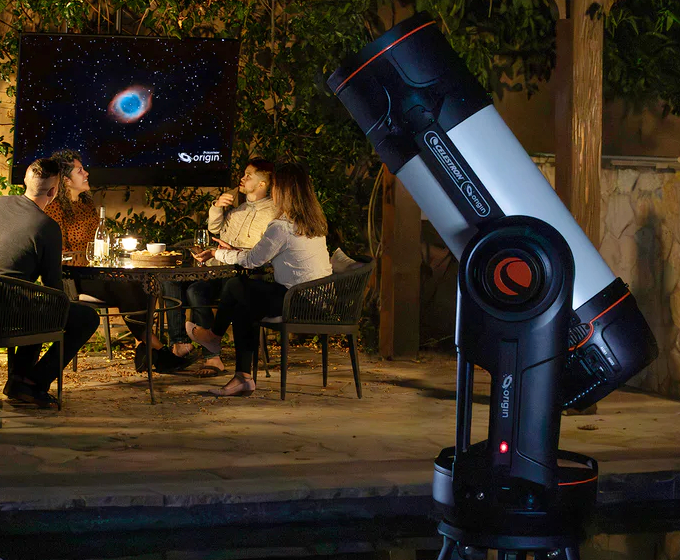
The Best Overall Smart Telescope
Celestron Origin Smart Telescope —
Looking for a premium smart telescope experience? Then look no further than this Intelligent Home Observatory from one of the top names in the hobby.
The best optics on a smart telescope we’ve seen, period. The larger aperture of the Celestron Origin Smart Telescope is unique compared to anything else on the market and on a whole other level in terms of speed. Cutting-edge technology has been paired with tried-and-true hardware, such as a Sony STARVIS camera sensor and the venerable Raspberry Pi 4 Model B. This gives you up-to-date smarts built on a proven and reliable platform. The Origin offers advanced controls and features if you want them and excellent automation if you just want to sit back and enjoy. This smart telescope is a perfect hybrid of Celestron’s excellent astronomy hardware pedigree and Simulation Curriculum’s seasoned software expertise, with cutting-edge AI tech mixed in for an experience that is both fresh and matured at the same time. The Origin smart telescope is modular and breaks down into three easily transportable sections. While more robust than every other device in this segment, it can still fit in the trunk of a car without issue. Celestron has shown the Origin will receive the same first-party accessory support we’ve come to love in their NexStar SE and Evolution lines, with a design that hints towards future upgrades and some great add-ons already available.
Celestron also offers additional accessories, made specifically for the Origin smart telescope, that will both protect your optics and enhance them!
The Best ‘Bang for Your Buck’ Smart Telescope
ZWO Seestar S50 All-in-One Smart Telescope —
If you want to dip your toes into the world of smart telescopes, this is the way to do it!
This is an absolutely incredible value. The Seestar S50 Smart Telescope is a fully-fledged smart telescope without the full price tag of most other options in this category. Made by ZWO, a company renowned for their astrophotography cameras and electronics gear. They’ve blended their experience both with this equipment and innovating perfectly with the S50. This hands-free smart scope moves, finds, and focuses on celestial objects in a snap with little to no input required from you. It's an ultra-portable package, with everything built right into a device that packs away into a foam case the size of a bread box. When you’re ready to begin exploring the night sky, just unpack, level, connect your mobile device, and you’re off! With a 50 mm aperture and 250 mm of focal length, the S50’s optics are by no means massive, however these optics are by no means a toy. William Optics’ RedCat 51 scope and Vaonis’ Vespera II smart telescope feature the same size front lens and focal length, both of which are beloved and popular telescopes.
Due the incredible popularity of the Seestar S50, there is a growing selection of aftermarket accessories that can fill in some of the gaps and enhance the performance for your smart telescope from ZWO!
Astrophotography Telescopes
The universe has some truly incredible views hidden beneath the surface of what our eye can see. Sometimes this is just beneath, and other times it is incredibly faint, but with just a bit of dedication and the right equipment, these stunning objects can be captured in intricate color and fine detail. With astrophotography seeing a meteoric rise in recent years, 2024 continues the trend of delivering excellent innovation, quality, and performance. Out of the overwhelming number of options available, we’ve done the work for you and selected the very best. If you’re looking to take pictures of nebulae, galaxies, and our solar system, these telescopes are exactly what you’re looking for.
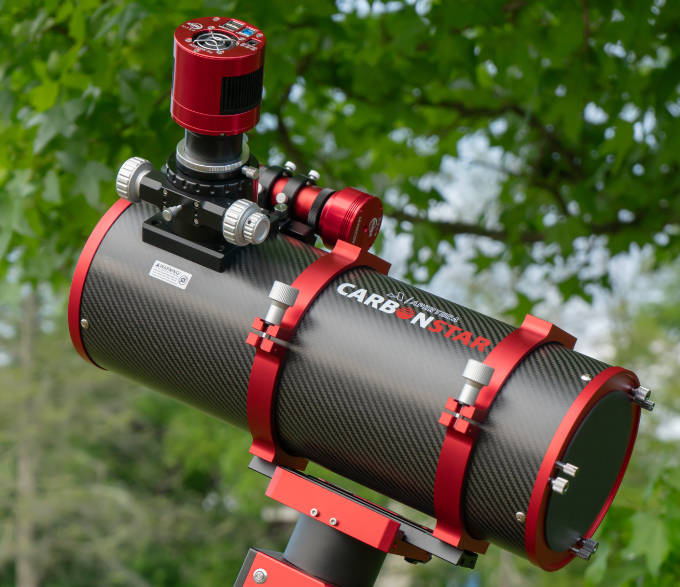
The Best Newtonian for Astrophotography
Apertura CarbonStar 150 Imaging Newtonian with 0.95x Coma Corrector —
Optimized imaging powerhouse, giving you 150 mm of aperture for a price that beats any refractor of the same size.
Apertura painstakingly optimized the 6” imaging Newtonian for one of today’s most popular sensor segments, micro 4/3, squeezing up to 10% more signal out of this design for that sensor when compared to its predecessor. This kit supercharges the optics with the PRCC. In addition to ensuring your stars are tack sharp and coma-free, this increases signal up to another 10% over the stock design, meaning this scope nets up to 20% more micro 4/3 signal over the prior 6” f/4 Imaging Newtonian. The same attention to detail was put into overhauling the rest of the telescope. Flex-free spider, stray light defeating knife-edge baffles, as well as featherweight and thermally stable carbon fiber all make for an incredible astrophotography scope. Apertura has also upgraded the focuser. It features strong and smooth linear bearing motion, 2” accessory support, and EAF-style electronic focuser compatibility out of the box.
While the high-quality Apertura 0.95x Photographic Coma Corrector is included with the telescope, there are plenty of other accessories we recommend to take your CarbonStar fueled astrophotography session to the next level!
If You Liked This, Here’s Another Option: Apertura CarbonStar 150 Imaging Newtonian
If you love the CarbonStar 150 but have a different coma corrector pairing in mind, it is available separately! With this standalone package, you get all the great updates listed above, just without the Apertura 0.95x Photographic Reducing Coma Corrector.
The Best Long Focal Length Astrophotography Telescope
Apertura CarbonStar 6" and 8” Ritchey-Chretien Telescopes
Looking to increase your reach with an astrophotography-optimized scope? One of these reflectors will be the telescope for you!
These Apertura CarbonStar RCs include a great focal length, giving you great framings of galaxies and smaller nebulae, as well as an up close and personal look at features in larger nebulae. Apertura has utilized an optical design found in professional observatories and the Hubble Space Telescope. Unassisted, this is capable of providing higher-quality images when compared to other popular compound telescope designs. The carbon fiber tube not only saves weight over the common steel tube, but also is more thermally stable. This also features knife-edge baffles for cutting stray light improving overall contrast. The included linear bearing focuser provides smooth motion and supports 2” accessories as well as a number of thread-on connections with the M56 drawtube. This can also be stepped down to the more common M54, M48, and M42 threads with the included adapters. Apertura has also designed this to accept EAF-style electronic focusers out-of-the-box, making adding this popular accessory a snap.
Apertura specializes in high-performance gear, and that includes providing a great ecosystem of accessories for their telescopes. Check out our accessory recommendations from Apertura and other popular manufacturers.
The Best Full Frame Compatible Refractor
Apertura 90 mm Triplet Refractor with Field Flattener and Hard Case —
This scope takes “well-corrected for full-frame” to the next level. Those looking for something with lenses for large sensors should check out this refractor!
This awesome Apertura 90mm Triplet apochromatic refractor produces sharp, clear images and includes a flattener right in the box to provide you with truly stellar astrophotographs from the start. This refractor and flattener combination provides quite possibly the best full-frame coverage and correction that we’ve seen in a refractor. The refractor features a large 90 mm FPL-53 front objective which powers this triplet refractor's stunning apochromatic and fine detail performance. Apertura has designed the 90mm APO refractor with a large 2.5” precision rack and pinion focuser. With internal knife-edge baffles, a built-in camera rotator, EAF-style electronic focuser compatibility, and an internal filter holder, this has everything an astrophotographer needs and more! You will find this refractor to be functional and stylish with blue-anodized hardware for great quality-of-life touches. Out of the box, Apertura has also included a hard case to make storage and travel safe.
Want to optimize the Apertura 90 mm APO refractor performance even more? Check out our recommendations of compatible Apertura accessories that you can add to your imaging toolkit!
The Best Wide Field Refractor
Apertura 75Q Refractor with 0.75x Reducer —
This wide field imaging package makes capturing panoramic-esque astrophotography vistas easy!
A powerful and portable refractor: The Apertura 75Q is small in size but provides big performance! At its core a no-fuss astrophotography telescope, the Petzval design provides apochromatic and corrected images right out of the focuser! Its five-element lens design includes a premium Hoya FCD-100 element for incredibly low light dispersion and excellent color correction! The included 0.75x reducer converts this already wide 405mm focal length refractor to an expansive 300mm FOV imager with a speedy f/4 focal ratio for rapid data collection. This is the same focal length as the well-regarded RedCat 61, but with more speed and 14mm more aperture. Included is a huge 3” rack and pinion focuser with dual speed control and electronic focuser compatibility out-of-the-box! The quality-of-life extras we like to see on a modern refractor are all here! In addition to the EAF-style electronic focuser support, this telescope also includes a camera rotator and 2” filter cell. Also included with the initial purchase of this refractor is a D-style and a V-style dovetail bar, meaning you can mount this in just about every mount on the market today!
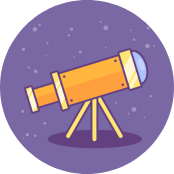
Learn More
Interested in learning more about telescopes and choosing the right gear for you? Not sure where to begin? Check out our Astronomy Hub!
















